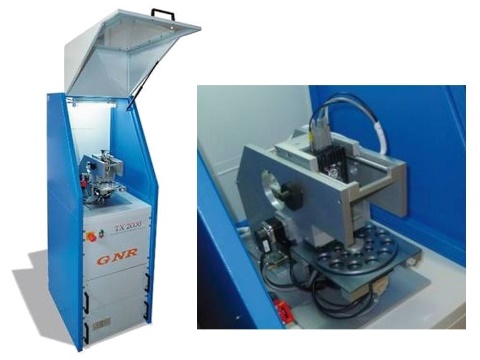ACTTR Brought To You The Latest TXRF, TX2000!

TXRF (Total Reflection X-Ray Fluorescence) is a spectroscopic technology, based on EDXRF (Energy Dispersive X-ray Fluorenscence) spectroscopy. TXRF is a perfect spectroscopy technology for detecting trace elements in the sample. TXRF does not require complicated sample preparation process, and it has almost no maintenance costs (no expensive gas needed, no expensive consumables). It is an ideal instrument for general research purpose, or commercial laboratories.
TXRF has the X-ray source which is irradiated with a few milliradians (mrad) grazing angles onto the sample, and the detector is placed in the vertical direction of the sample for the fluorescence energy, instead of directly detecting the energy of reflected light. TXRF can significantly reduce the scattering and background noise. It requires only a little amounts of sample (5μL - 100μL), and the detection limite can reach ppb level, and there's no matrix affection.
TXRF is usually been compared with AAS (Atomic Absorption Spectroscopy) or ICP (Inductively Coupled Plasma Spectroscopy) In the past, due to the expensive EDXRF components, TXRF is not popular and not well-known, although TXRF technology has existed for many years. In recent years, the main components of X-ray technology is improved a lot, and the cost is also reduced, TXRF is becoming an ideal affordable tool of chemical analysis, and it's becoming more and more popular.
The latest TXRF spectrometer, TX2000 is brought to you from GNR. It combines TXRF and EDXRF (traditional 45° geometry) spectroscopy in one single equipment. By the stepper motors with optical encoders ensure extremely precise angular values, user is allowed to proceed both EDXRF and TXRF measurement.

The software can automatically switching the primary beam (MoKα, WLα/WLβ and bremsstrahlung 33 keV) using double anode mo/W X-ray tube, and it enhanced the measurement performance to a wide range of elements. We select the energy required using an high reflectivity 80% (Wla/lb/moKa) multilayer. One can choose also other X-ray tubes and monochromatise the energy that you need.
Moreover, the below functions brought to you a complete new experience with the high performance measurement.
- Peltier-cooled Silicon Drift Detector with an energy resolution of 124eV FWHM@MnKa(shaping time 1 ms)
- Minimal distance between the sample and the detector (mounted to the axis normal to the plane of the sample).
- Instrumental detection limits for more than 50 elements below 10 pg.
- Helium device to improve the detection limits for the light elements.
- The Spectrometer is fully automated, and you can control different total reflection conditions for different energies from the PC, using stepping-motors mowing monochromator and tube shield.
TXRFACQ32 acquisition program, which allows one to accomplish the following functions: X-ray generator load settings, multisample positioning, counter chain parameter settings, selection of radiation, centering procedure, K, l, & m markers, time or
count selection, acquisition of data in both geometries (TXRF and EDXRF).
EDXRF32 for the elaboration of data that includes: least square marquardt fit procedure for the area calculation (spectral analysis), automatic/manual search function, manual or automatic calibration of energy, quantification via an internal standard using theoretical and experimental sensitivity curves for total reflection, several types of background correction.


